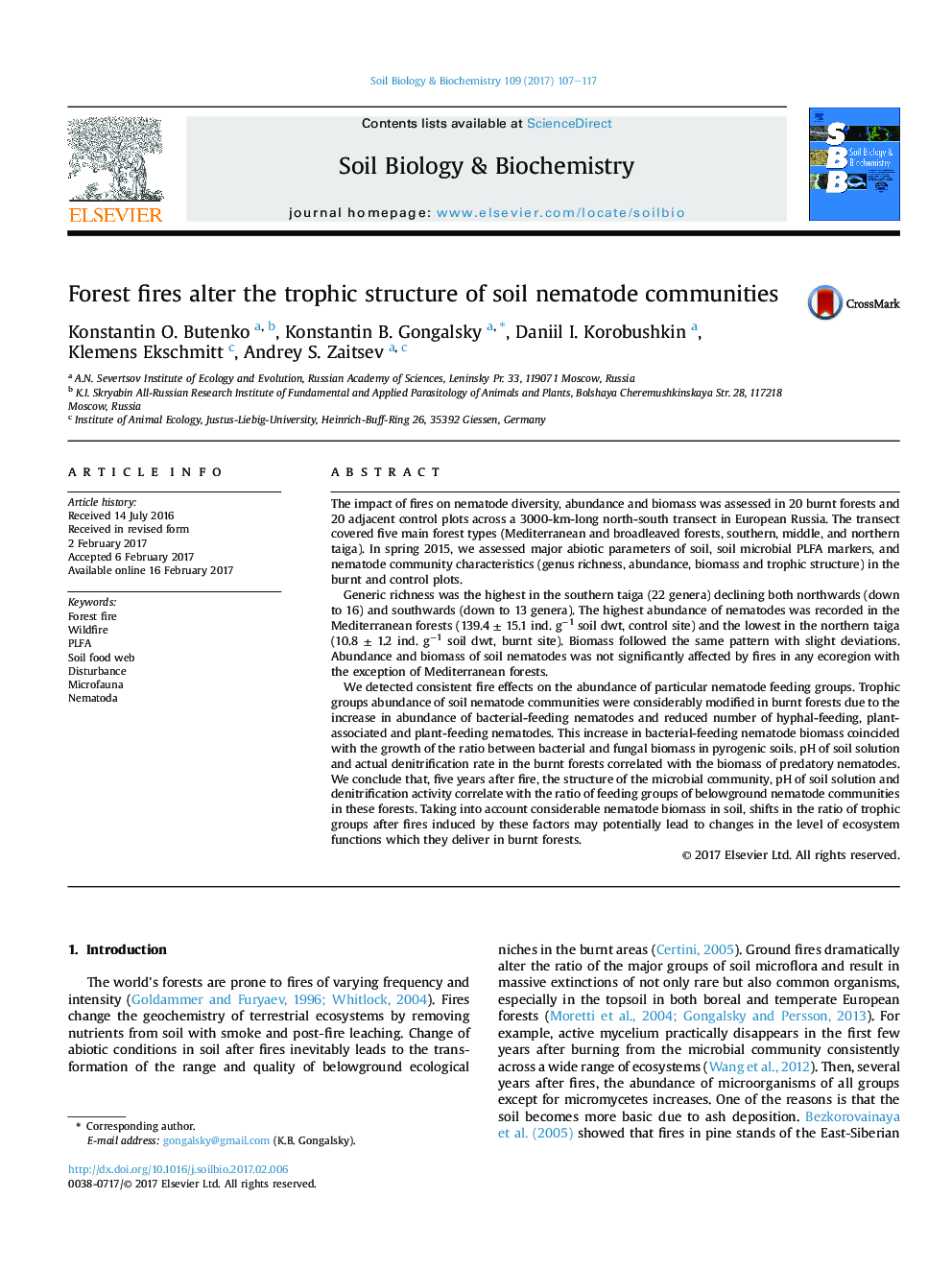| کد مقاله | کد نشریه | سال انتشار | مقاله انگلیسی | نسخه تمام متن |
|---|---|---|---|---|
| 5516479 | 1542575 | 2017 | 11 صفحه PDF | دانلود رایگان |
- We assessed the impact of forest fires on soil nematodes along a 3000Â km-long transect in Russia.
- Geographic location had effect on nematode abundance, taxonomic richness and biomass.
- Fires modified nematode community feeding structure, but not abundance or biomass.
- Higher bacterial-feeder biomass reflected higher ratio of bacteria vs fungi in burned forests.
- Shifts in the nematode trophic structure after fires may modify the level of associated ecosystem functions.
The impact of fires on nematode diversity, abundance and biomass was assessed in 20 burnt forests and 20 adjacent control plots across a 3000-km-long north-south transect in European Russia. The transect covered five main forest types (Mediterranean and broadleaved forests, southern, middle, and northern taiga). In spring 2015, we assessed major abiotic parameters of soil, soil microbial PLFA markers, and nematode community characteristics (genus richness, abundance, biomass and trophic structure) in the burnt and control plots.Generic richness was the highest in the southern taiga (22 genera) declining both northwards (down to 16) and southwards (down to 13 genera). The highest abundance of nematodes was recorded in the Mediterranean forests (139.4 ± 15.1 ind. gâ1 soil dwt, control site) and the lowest in the northern taiga (10.8 ± 1.2 ind. gâ1 soil dwt, burnt site). Biomass followed the same pattern with slight deviations. Abundance and biomass of soil nematodes was not significantly affected by fires in any ecoregion with the exception of Mediterranean forests.We detected consistent fire effects on the abundance of particular nematode feeding groups. Trophic groups abundance of soil nematode communities were considerably modified in burnt forests due to the increase in abundance of bacterial-feeding nematodes and reduced number of hyphal-feeding, plant-associated and plant-feeding nematodes. This increase in bacterial-feeding nematode biomass coincided with the growth of the ratio between bacterial and fungal biomass in pyrogenic soils. pH of soil solution and actual denitrification rate in the burnt forests correlated with the biomass of predatory nematodes. We conclude that, five years after fire, the structure of the microbial community, pH of soil solution and denitrification activity correlate with the ratio of feeding groups of belowground nematode communities in these forests. Taking into account considerable nematode biomass in soil, shifts in the ratio of trophic groups after fires induced by these factors may potentially lead to changes in the level of ecosystem functions which they deliver in burnt forests.
Journal: Soil Biology and Biochemistry - Volume 109, June 2017, Pages 107-117
